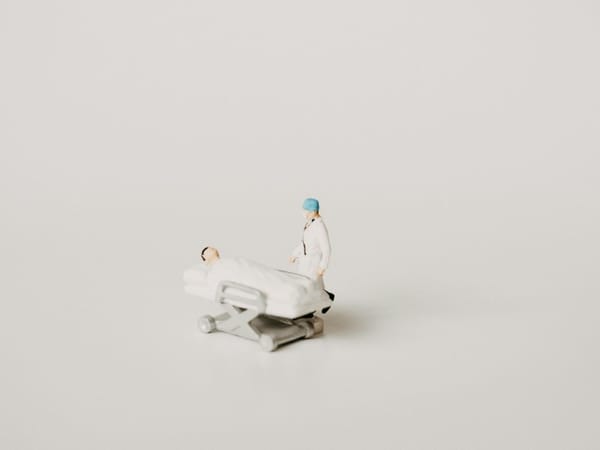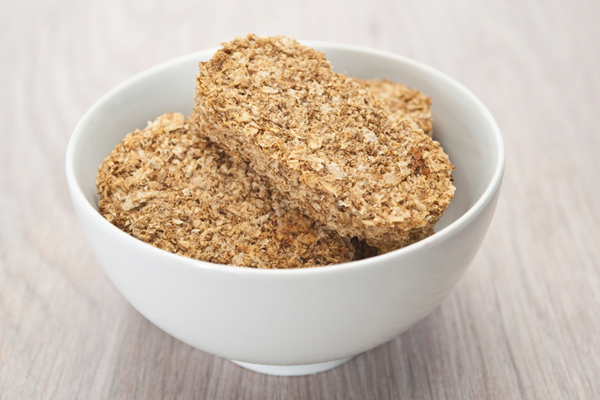Astaxanthin, a potent antioxidant carotenoid found in marine algae and seafood, has emerged as a promising candidate for extending lifespan and promoting healthy aging. Recent studies, including an NIH-funded longevity study, have demonstrated astaxanthin's ability to modulate key biological pathways associated with longevity and protect against age-related cellular damage.
Astaxanthin and Cardiovascular Health
Astaxanthin has demonstrated significant potential in promoting cardiovascular health through various mechanisms. Its powerful antioxidant properties play a crucial role in protecting the heart and blood vessels from oxidative stress and inflammation, two key factors in the development of cardiovascular diseases.
Studies have shown that astaxanthin can effectively lower blood pressure in hypertensive animal models[2]. This antihypertensive effect is attributed to its ability to improve nitric oxide availability and reduce oxidative stress in the vascular system. By enhancing nitric oxide production, astaxanthin promotes vasodilation, which helps regulate blood pressure and improve overall cardiovascular function[2].
In addition to its blood pressure-lowering effects, astaxanthin has been found to have cardioprotective properties. A study on rats with pressure overload-induced cardiomyopathy demonstrated that astaxanthin could alleviate cardiac damage and fibrosis in the left ventricles[1]. This protective effect is likely due to astaxanthin's ability to reduce oxidative stress and inflammation in cardiac tissues.
Astaxanthin also shows promise in improving lipid profiles, which is crucial for cardiovascular health. A meta-analysis of randomized controlled trials revealed that astaxanthin supplementation could significantly reduce triglyceride levels and increase high-density lipoprotein (HDL) cholesterol[3]. These changes in lipid profiles are associated with a reduced risk of atherosclerosis and other cardiovascular diseases.
Furthermore, astaxanthin has been found to inhibit low-density lipoprotein (LDL) oxidation, a key process in the development of atherosclerosis[2]. By preventing LDL oxidation, astaxanthin may help reduce the formation of atherosclerotic plaques in blood vessels, thereby lowering the risk of heart attacks and strokes.
Recent clinical studies have provided evidence of astaxanthin's beneficial effects on cardiac function in heart failure patients. A pilot study involving patients with reduced left ventricular ejection fraction (LVEF) found that 3-month astaxanthin supplementation improved LVEF by 11.4% and extended 6-minute walking distance by 39.4 meters[3]. These improvements were associated with a decrease in reactive oxygen metabolites, suggesting that astaxanthin's antioxidant properties play a significant role in its cardiovascular benefits.
Astaxanthin's cardiovascular benefits may also extend to its effects on mitochondrial function. As a potent antioxidant, astaxanthin can protect mitochondria from oxidative damage, thereby preserving cellular energy production and reducing the risk of mitochondrial dysfunction associated with cardiovascular diseases[4].
While these findings are promising, it's important to note that more research, particularly large-scale clinical trials, is needed to fully establish the efficacy of astaxanthin in preventing and treating cardiovascular diseases in humans. However, the current evidence suggests that astaxanthin holds significant potential as a natural compound for supporting cardiovascular health and reducing the risk of heart disease.
Astaxanthin's Role in Skin Rejuvenation
Astaxanthin, a powerful antioxidant carotenoid, has shown significant potential in promoting skin rejuvenation and protecting against skin deterioration. Its unique molecular structure allows it to penetrate through multiple layers of skin, providing comprehensive protection and rejuvenation effects.
One of the primary mechanisms by which astaxanthin benefits skin health is through its potent antioxidant activity. It effectively scavenges reactive oxygen species (ROS) in the skin, which are major contributors to skin aging and damage[2]. By reducing oxidative stress, astaxanthin helps maintain the skin's natural barrier function, keeping it smooth and preventing moisture loss[2].
Clinical studies have demonstrated the efficacy of astaxanthin in improving various aspects of skin health. A 16-week study involving 65 healthy female participants found that oral supplementation with 6 mg or 12 mg of astaxanthin daily helped prevent the worsening of wrinkle parameters and skin moisture content, which significantly deteriorated in the placebo group[3]. This suggests that astaxanthin may help maintain skin conditions associated with environmentally induced damage.
Astaxanthin has also shown promise in reducing inflammation in the skin. It suppresses ultraviolet B (UVB)-induced inflammatory cytokine secretion in keratinocytes and matrix metalloproteinase-1 (MMP-1) secretion by fibroblasts[3]. MMP-1 is known to break down collagen, leading to wrinkle formation and loss of skin elasticity. By inhibiting MMP-1, astaxanthin may help preserve the skin's collagen matrix and maintain its elasticity.
Furthermore, astaxanthin has been found to have beneficial effects on skin pigmentation. Studies have shown that it can suppress post-UVB hyperpigmentation, potentially helping to prevent or reduce age spots[2]. This effect, combined with its anti-inflammatory properties, contributes to a more even and youthful skin tone.
A study conducted over four weeks with middle-aged men and women found that daily supplementation with 4 mg of astaxanthin resulted in significant improvements in facial skin condition[1]. The researchers observed reductions in oxidative stress markers, corneocyte desquamation (peeling of the outermost layer of skin), and microbial presence on the skin[4]. These changes were consistent with a reversal of the aging process in the skin.
Interestingly, the benefits of astaxanthin on skin health appear to be more pronounced in individuals who are overweight or obese[4]. This could be due to the higher levels of underlying inflammation in these individuals, which astaxanthin may help to mitigate.
It's worth noting that astaxanthin's effects on skin health are not limited to oral supplementation. Topical application of astaxanthin has also shown promise in protecting against UV-induced skin damage and improving skin moisture and elasticity[2][3].
While these findings are promising, it's important to note that more extensive, long-term studies are needed to fully understand the optimal dosage and duration of astaxanthin supplementation for skin health benefits. However, the current evidence suggests that astaxanthin is a potent tool for maintaining skin health and potentially reversing some aspects of skin aging.
Astaxanthin's Impact on Brain Aging and Neuroprotection
Astaxanthin has demonstrated significant potential in mitigating brain aging and providing neuroprotection through various mechanisms. Studies have shown that astaxanthin can alleviate brain aging by attenuating oxidative stress, ameliorating hippocampus damage, and upregulating brain-derived neurotrophic factor (BDNF) expression[1][2].
In animal models, astaxanthin treatment has been found to restore the activities of crucial antioxidant enzymes such as glutathione peroxidase (GSH-PX) and superoxide dismutase (SOD) in the brains of aging rats. It also increased glutathione (GSH) contents and total antioxidant capacity (T-AOC) while decreasing markers of oxidative damage like malondialdehyde (MDA), protein carbonylation, and 8-hydroxy-2-deoxyguanosine (8-OHdG)[1]. These effects contribute to the overall reduction of oxidative stress in the brain, which is a major factor in age-related cognitive decline.
Astaxanthin's neuroprotective properties extend to its ability to cross the blood-brain barrier, allowing it to directly interact with neural tissues[2]. This unique characteristic enables astaxanthin to modulate various molecular pathways involved in brain health and function. For instance, it has been observed to increase the ratio of Bcl-2/Bax (proteins involved in regulating cell death) and decrease the expression of Cyclooxygenase-2 (COX-2), an enzyme associated with inflammation[1].
One of the most promising aspects of astaxanthin's impact on brain aging is its ability to enhance adult neurogenesis. Studies have shown that astaxanthin supplementation can improve stem cell potency by increasing the proliferation of neural progenitor cells[2]. This effect is particularly important as decreased adult neurogenesis is considered a hallmark of brain aging. By promoting the growth and regeneration of adult brain neurons, astaxanthin may help maintain cognitive functions in the elderly[2][5].
Furthermore, astaxanthin has been found to have anti-inflammatory effects in the brain. It can suppress the NF-κB pathway, reducing the production of pro-inflammatory cytokines and limiting neuroinflammation associated with aging and chronic microglial activation[5]. This anti-inflammatory action, combined with its antioxidant properties, may help preserve the activity of neurogenic niches during both normal and pathological aging[5].
In addition to these effects, astaxanthin has been observed to regulate important neurotrophic factors. For example, it can increase BDNF levels in both the brain and hippocampus of aging rats[1][2]. BDNF is crucial for neuronal survival, differentiation, and plasticity, and its decline is associated with various neurodegenerative conditions.
While the molecular and cellular effects of astaxanthin on brain aging have been well-documented in animal studies, its clinical application in humans is still largely undetermined[5]. More research is needed to fully understand the optimal dosage and long-term effects of astaxanthin supplementation on human brain health. Nevertheless, the current evidence suggests that astaxanthin holds significant promise as a natural compound for supporting brain health and potentially slowing down age-related cognitive decline.














Member discussion